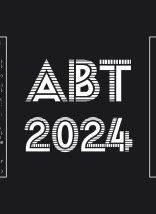When you have a small team working to do big things, individual goals can become overwhelming. One writer, trying to keep the company blog current and consistent, found a way. He brought non-writers into the fold. Here’s how he managed it.
For two years, I was the only writer at my company. If you want a web app developed, a homepage designed, or any kind of user data analyzed, we have a team for that. If you wanted to actually write about any of these things, my company came to me.
On my best days, this was the greatest of power trips. I decided how we described every part of our organization. Our philosophy and ideal way of working, all worded by me. I’d craft content about the kinds of customers we looked for. Or, I’d wax on about how we bend the internet to the will of all sorts of forward-thinking companies. I was able to create a voice for the company.
On my worst days, I felt like an alien. Here I was, trying to make my way around this planet where the dominant language was javascript. And storytelling? It only mattered if it convinced someone to give us more money. Like when I arrived at the office one day and found an 87-page sales proposal in my inbox. It came with only one comment: “Use your writer magic to edit this!”
Is Good Writing Magic?

And after I got done screaming on the inside, I realized they have a point. Writing is magic. If I put together the right combination of words on a blog post or sales doc, I can convince someone to do something. For example, hire us. Writing, that is compelling, is not something that anyone can measure or quantify. Good writing is more art than science. I usually feel my way through my writing rather than calculating each word or phrase.
But how can you teach magic? I’m not Dumbledore, in that regard. But if I’m the only wizard capable of casting word magic in my company, I’m going to burn out and fast. It would be impossible to not get overwhelmed by how much my colleagues need my help. So what’s the answer?
Pull back the curtain on the magic and show how you do the trick. If writing is magic, then magic is actually the product of proven techniques which can be shared, repeated, and relied on. Now all I needed to do was coach my non-writers to write. Here are four tactics I found that made this teaching and coaching process work.
1. Break Down the Writing Process
If there’s one thing technical workers love, it’s a reliable process. As a writing coach, the more I can illustrate the individual steps to writing something clear and compelling, the easier it will be for my colleagues to follow it.
At Atlantic BT, the writing process I teach involves four steps:
- Come up with ideas and narrow them down to your core topic.
- Outline a blog post about the idea.
- Draft this idea.
- Revise the idea until it’s ready to publish.
I drew these steps from the writing process I learned in high school—begin with a thesis, outline 3 to 5 points which prove your argument, then draft and revise. Each point in your outline should include additional information to explain why they matter. It isn’t necessary to go into a ton of detail, but the more you write down in an outline, the easier the first draft will be.
Naturally, outlining isn’t the only way to write. But if you’re at all nervous about writing a blog post (and most programmers are), outlining your ideas in advance is the best way to prevent the frustration that often makes aspiring writers quit. Why? Because every time you feel unsure of what to write next, you can go back to your outline—it’s your map into the wilderness of unwritten ideas.
Once my colleagues have an outline, I encourage them to write a first draft as quickly as possible. The most important qualities in a first draft are speed and honesty. Speed prevents you from making excuses for not finishing what you started. Honesty ensures this first draft reflects all the ideas and feelings that led you to write this idea in the first place. Those things in mind, an aspiring writer’s main goal with a first draft is to finish it; her secondary goal is to make it the best reflection of her idea as possible.
2. Make Writing an Incentive for Everyone
Writing, even at its best, is hard work. It takes dedicated time, concentration, and the willingness to open yourself up to criticism from the entire internet. Even highly successful authors struggle with the self-confidence and discipline to write; acclaimed fantasy writer George R.R. Martin admitted that he sometimes wondered if he should quit writing and become a plumber—and this after writing numerous bestsellers and inspiring one of the most popular shows on TV.
If writing is a tough challenge for veteran authors like Martin, how daunting do you think writing a blog post will be to the average PHP developer? He’s got to overcome this fear before he even gets started. So how do you motivate him to try?
The most direct tactic is providing some kind of incentive. You could have a weekly writing contest in which anyone who works to get a post published on your blog receives a small cash reward. You could even take it a step farther. Every two months, the most popular post on your company blog (as measured by page views) could win a cash prize. By awarding the prize publicly, you can give each aspiring writer a little more motivation.
Another important incentive is to publicly recognize every single writer who carries a blog draft to publication. The simplest way to do this is by emailing or messaging the company to congratulate the new writer on his/her work getting published. However, I also like to tell my colleagues in our weekly company stand-up about our latest blogs so everyone can applaud the new writer to his face. The more you communicate that each person’s voice matters, the more likely you will recruit more writers for the blog.
3. Provide Time for Writing in the Workday
However, a little cash motivation won’t cut it if you’re asking a programmer to spend his or her own time with the difficult work of writing on top of regular tasks. If you want your employees to contribute to your company blog or other writing areas, make time on your employees’ schedules for writing blog posts.
This isn’t as simple as having a “free-writing hour” every day in the style of 8th grade homeroom. After all, you still need your programmers and technical types to keep up with existing projects, and losing an hour every day can hinder progress.
Instead, check in with your employees regularly to see if they have ideas for a blog post. If someone wants to write, the best thing you can possibly do is make time for them to do so on the schedule. This is especially true if their idea will help promote the expertise and value of your organization. By showing how your programmers not only have big ideas but also know how to write and communicate about them, you’re showing off the value of your company in a way that puts your people first.
4. Coach Your Colleagues 1:1, Especially on Revisions
If you ask anyone who has never taught how a teacher passes along knowledge, they’ll probably say something about giving a lesson in front of a class. If you ask an actual teacher, they’ll tell you the best learning happens in one-on-one conversations.
I learned this lesson the hard way. Atlantic BT gave me the opportunity to run my own writing class at lunchtimes once a week (free food included). I prepared fun presentations, came up with great GIFs, and offered the group all kinds of ways to generate ideas and blog posts. My colleagues had fun, took notes, and seemed eager to give blog writing a try. The only problem was they weren’t actually writing—weeks later, new drafts barely trickled in.
I had given my coworkers a good pep talk and some tips to get started, but my enthusiasm and advice weren’t enough to motivate my friends to do the hard work of finishing a draft. Instead, I began to approach my friends one-on-one, asking them about their ideas and how the writing was going. I then scheduled a meeting between me and each writer who was working on a draft.
The difference was remarkable. Once I began to meet and talk through a draft with an aspiring writer, we could quickly put together an outline on a shared Google doc. From there, it was easy to help them craft an introduction, string together paragraphs, and end on an action-oriented conclusion.
Democratize Your Blog Today
I now have another content writer on my team (“Hello, everyone!” -Other Content Writer). However, we could not have gotten our company’s blog content to this point had it not been for the Account Executives, Developers, and other technologists who helped write blogs for the ABT site. Their voices are a crucial part of what makes my company unique, and it’s one of the best parts of my job to help them share their ideas on our site.









